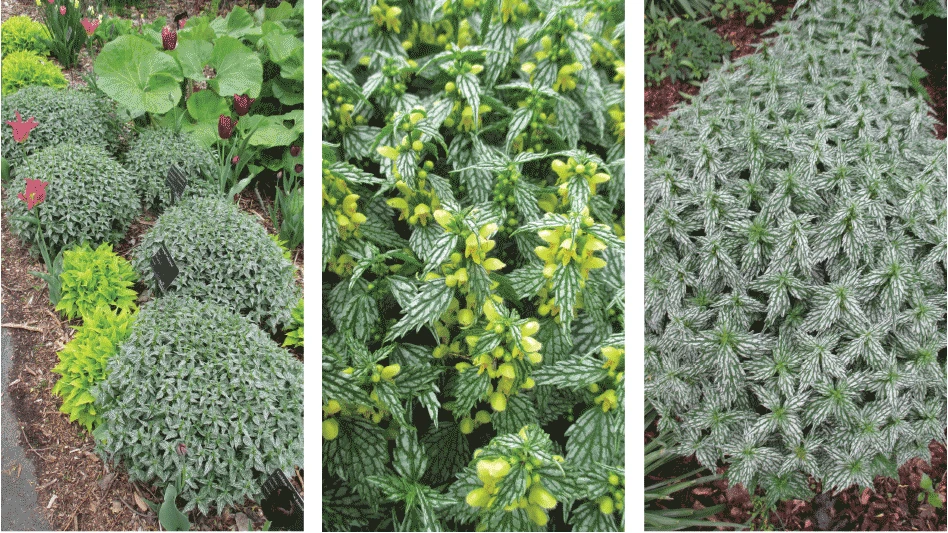

Tools are only as good as the purpose they were made for. The weed control toolbox includes things such as liquid and granular herbicide applications, hand-pulling, and mulches. While these tools all accomplish the same thing, some are better suited for certain applications than others. Just as a screw is a screw and must be driven, the various heads of the screw (flat, star, square, or Phillips) dictate which driver is better suited to accomplish the task. It’s important in weed control to consider which method is not simply good, but best.
Liquid herbicide applications
Liquid herbicide applications are a powerful tool in the nursery grower’s toolbox. In liquid and granular herbicide comparison tests conducted at Auburn University, liquid applications controlled weeds as well as or better than their granular counterparts (Table 1). Liquid applications will inherently have a more consistent and even distribution of the product due to calibration efforts. There is also considerably less human error in the tractor’s gear than with someone walking with a granular spreader.
Liquid applications do have their drawbacks. The initial cost of the equipment and necessary calibration training can be a deterrent to many growers. Although, after the initial capital outlay, this system can be relatively easy to operate with only periodical calibration checks. Tall plants and irrigation risers can also make this method of application difficult, if not impossible. Herbicide fate is also something to be aware of. As container spacing increases, the amount of non-target loss (herbicide that does not end up in the container) also increases. However, this point is generally ignored as respacing containers requires more labor and a higher degree of herbicide exposure to laborers.
Granular herbicide applications
Granular applications are the most commonly applied form of herbicides in container production.
The largest advantages in granular applications are ease of application and minimal herbicide-ornamental contact. It’s easy to send a few trusted employees out with a “belly-grinder” spreader and apply granular herbicides. Proper calibration is difficult, but with the aid of a metronome or catchy song with a strong beat (“Another One Bites the Dust” is one I have used to set my pace and to serve as a warning to the weeds), the target application range can be achieved with relative ease.
Through my years of participating in herbicide trials, I have noticed that some liquid formulations caused ornamental damage while the granular formulation of the same chemistry caused none. While this effect is highly dependent on herbicide mode of action, granular herbicides will inherently have fewer points of contact than liquid applications.
Weed control efficacy is dependent on herbicide prill distribution. This distribution is affected by spreader output, rate, plant deflection, and even the lip of containers. Research has shown that if an area the size of a dime was to remain herbicide prill free, a weed seed in the center of that dime would stand a 50 percent chance of germination. Much like liquid applications, non-target loss is also an issue for granular applications. Large containers, which require larger spacing, cause granular applications to be very inefficient.
Mulch applications
While mulches lack the flash of a boom sprayer or the satisfaction of applying advanced chemistries, this old-school method of weed control is the most overlooked tool in the toolbox. Mulches control weeds by nature of their physical and chemical characteristics. Ideal mulches provide a physical barrier, quickly dry out, and are void of all nutrients. However, mulches can be highly variable in meeting these criteria. With the support of the Horticultural Research Institute, we at Auburn University conducted a two-year study to answer questions about this practice’s feasibility and efficacy.
Our research was conducted from two different scenarios we believed to be applicable to nursery growers. Some nurseries are located on or adjacent to wooded tracts of property and could manufacture their own mulches. For this purpose, we identified four readily-available tree species with low economic value: Eastern-red cedar, loblolly pine, Chinese privet, and sweetgum, for self-manufactured mulches. Other growers may not have this resource and must depend on commercially available sources of mulch. In order to incorporate both scenarios, commercially purchased pine bark mini-nuggets were studied with self-manufactured mulches.
Making mulch


The lull of the winter months provides the ideal window for nursery growers to manufacture their own mulches. We harvested trees 4 to 8 inches in diameter, only using the trunk portions (bark included) of the trees. Between two chain saws, a couple of strong backs, and a jungle of privet, we could load two trucks in a couple of hours with minor breaks for refueling and chain adjustments. The diameter of the trees should reflect the restrictions imposed by the chipper. The larger the chipper, the larger the trees. The trees were chipped using a Vermeer BC1400 XL, which was capable of handling logs 12 inches in diameter. (Bartley et al. 2016a).
Different chippers may yield very different end products. Remember the three keys to an effective mulch? Particle size influences a mulch’s ability to act as a physical barrier and affects how quickly it dries out. If mulch particles are too small, your weed barrier may increase weed germination. If particles are too large, gaps in the physical barrier will be quickly exploited by weeds. You will need to adjust your chipper appropriately. Of our mulches, 78-90 percent of the mass was larger than ¼ inch and less than 10 percent was greater than 2 inches. This is by no means a particle size distribution that you should target, but rather an example of what proved to be effective for our study.
Mulch weed control efficacy

To evaluate the mulches, we divided #15 squat pots into thirds with dividers. This allowed us to evaluate each mulch type at three different depths to determine the ideal depth for weed control. Weeds tested were spotted spurge (Euphorbia maculata), eclipta (Eclipta prostrata), and phyllanthus (Phyllanthus tenellus).
We evaluated weed control over three 30-day runs throughout the growing season. Each 30-day run began by seeding the containers with 30 weed seed (10 seed per third of the container) of a single weed species. After 30 days to germinate and grow, we collected data. This allowed us to evaluate the longevity of control over the course of the growing season.
Our results indicated that mulch species had no influence over weed control. Self-manufactured mulches controlled weeds no differently than commercially available pine bark mini-nuggets. Mulch depth was the most influential factor for weed control. In our study, a mulch depth of 2 inches provided greater than 90 percent control of all three weed species during the course of the growing season (Table 2, page 32). For this reason, we recommend a depth of 2 inches of mulch be applied to the surface of the containers for effective, long-term weed control (Bartley et al. 2016b).
When mulches matter
Mulches are the ideal tool for weed control in large containers (> 3 gallon) for several reasons. In large container production, herbicide applications become much more difficult and inefficient. The increase in spacing leads to more herbicide on the pad than in the container. The same can be true for small container production. However, 2 inches of mulch in a trade gallon container would decrease the volume of substrate in the container by 27.6 percent while only decreasing the volume of substrate in a #7 by 17.4 percent. A reduction of an already small amount of volume in a #1 container could certainly effect ornamental growth, but this effect would be less noticeable, if at all, in a larger container.
In fact, I’d be willing to bet that due to potting practices and the natural settling of substrates, most of the cap space in large containers is already available to apply 2 inches of mulch. Increased weed control longevity with mulches will also result in fewer reasons to touch the plant, decreasing cost. This is important considering many plants celebrate “birthdays” in large containers.

Is mulch weed control only appropriate for large containers? Absolutely not. There are numerous, varied scenarios where mulches can prove to be advantageous. Organic growers certainly don’t have many options when it comes to weed control tools. Some herbicide-sensitive ornamentals, like hydrangeas, are ideal candidates for mulch weed control applications. The point is to consider and utilize mulches when they are the best tool for the job.
Often, the best tool is one that saves you the most money. Cost is important. It is generally the first question I’m asked when discussing mulches with a grower and is the most difficult to answer. The practicality of mulch weed control varies from grower to grower. The economics are dynamic and depend on many variabilities such as available time, nursery layout, location and availability of mulch resources, equipment.

Currently, the cost for pine bark mini-nuggets is ~$16 per cubic yard. At this price, it would cost $0.11 (not including labor) to apply two inches of mulch in a #7 container or $0.18 in a #15 container. This is a respectable cost considering herbicide applications cost roughly $0.05 per trade gallon. How you apply the mulches is entirely up to your creativity and ingenuity. Some nurseries add an attachment to their potting machine, making it an additional step in their potting assembly line; some growers blow the mulch onto containers using a highway mulch blower. I encourage you to be as creative as possible but to always consider your cost.

If you don’t know your cost per container per year for weed control, how could you possibly know which method is best? Aside from extraneous circumstances, cost per container is the general parameter by which weed control methods are compared. Three things will separate the best growers from the good ones.
- Know your cost.
- Know your tools, and …
- Know when to use them.
Because of all of the valuable tools at your disposal, knowledge is the most invaluable.
References: Bartley III, P.C., G.R. Wehtje, A.M. Murphy, W.G. Foshee, C.H. Gilliam. 2016a. Effects of woody mulches and dimethenamid-p on container grown Ligustrum japonicum and Viburnum macrocephalum. Journal of Environmental Horticulture (In press). Bartley III, P.C., G.R. Wehtje, A.M. Murphy, W.G. Foshee, C.H. Gilliam. 2016b. Mulch type and depth influence weed control on three major weed species in nursery container production. HortTech (In press). Wehtje, G.R., Q. Yang, C.H. Gilliam, A.M. Murphy, and J. Fausey. 2015. Preemergence control of spotted spurge (Chamaesyce maculata) with flumioxazin as influenced by formulation and activation moisture. Weed Technology 29:108-114.
Get curated news on YOUR industry.
Enter your email to receive our newsletters.
Explore the October 2016 Issue
Check out more from this issue and find your next story to read.
Latest from Nursery Management
- NewGen Boxwood added to Proven Winners ColorChoice line
- Terra Nova releases new echinacea variety, 'Fringe Festival'
- American Horticultural Society names winners of 2025 AHS Book Awards
- Nufarm announces unified brand
- American Horticultural Society announces winners of 2025 Great American Gardeners Awards
- Shifting the urban environment
- The Growth Industry Episode 3: Across the Pond with Neville Stein
- What's in a name?






